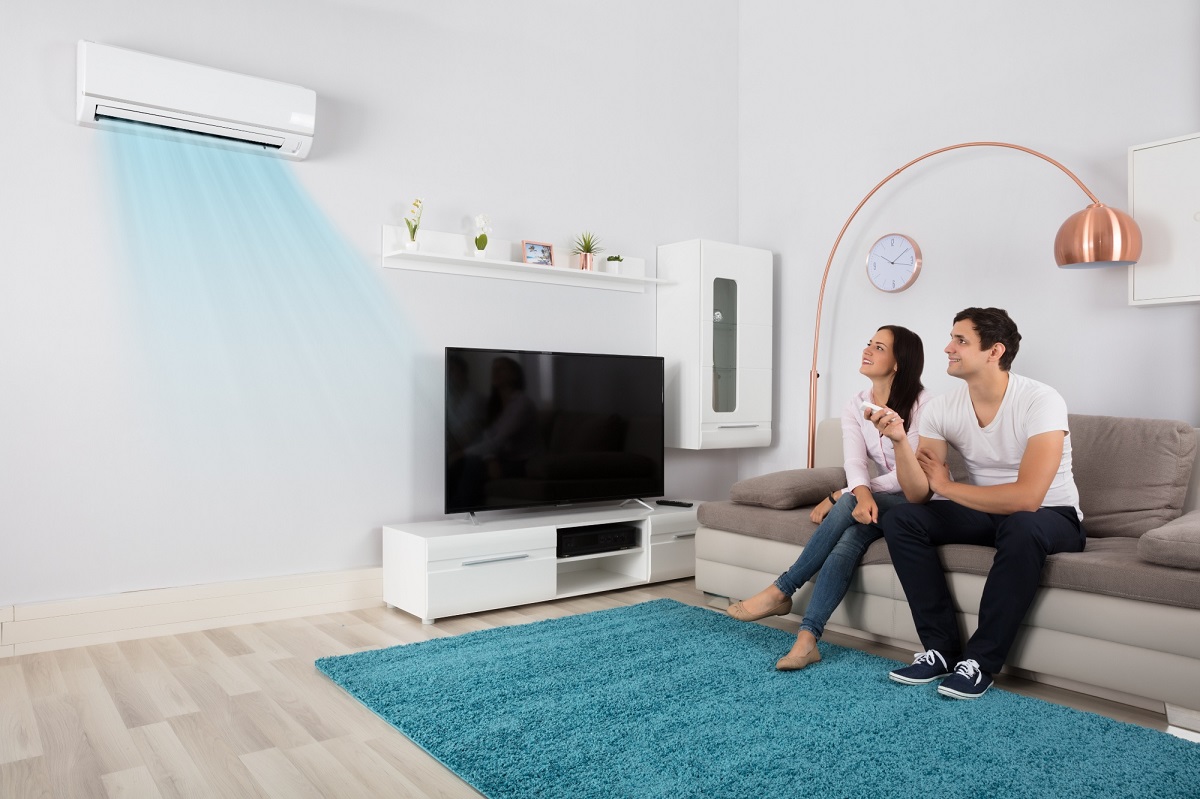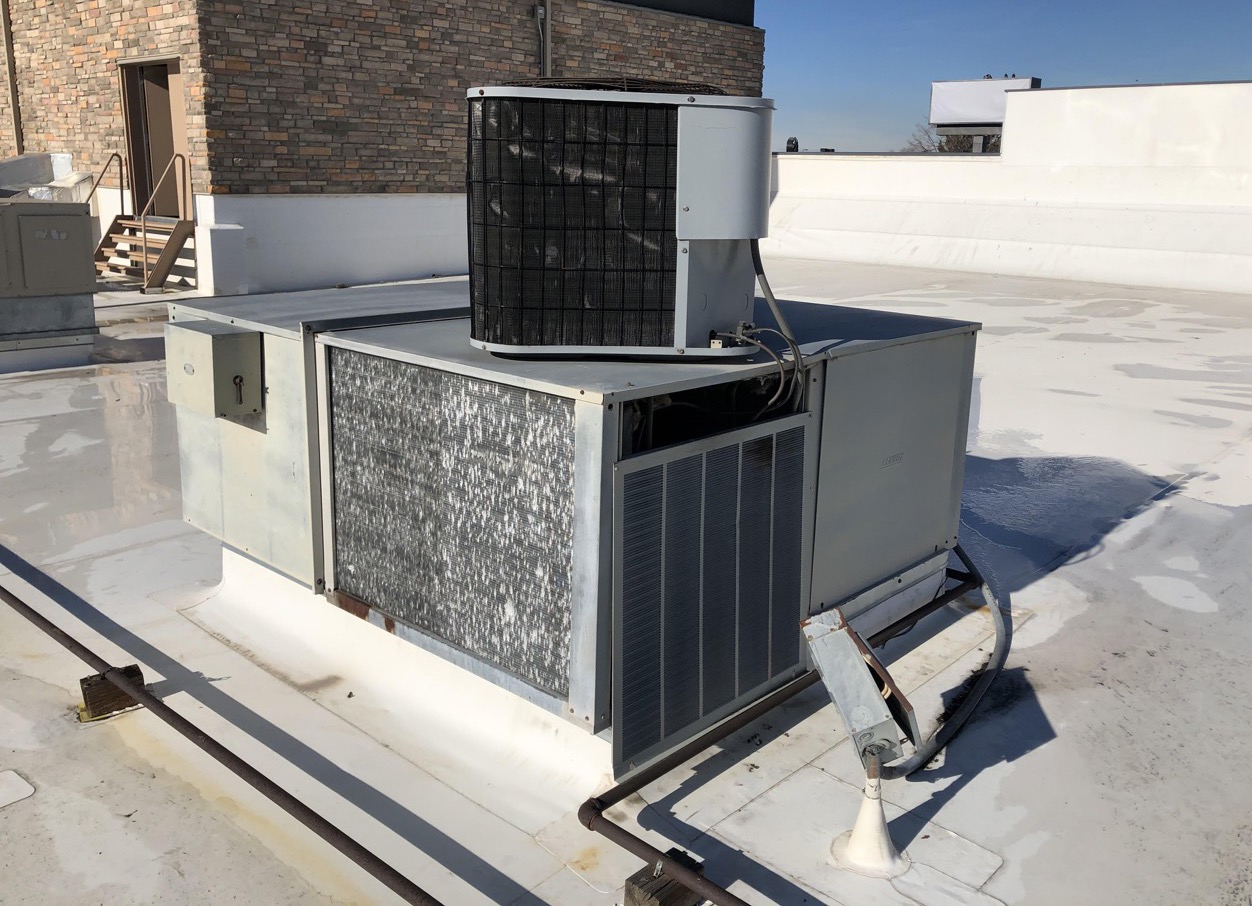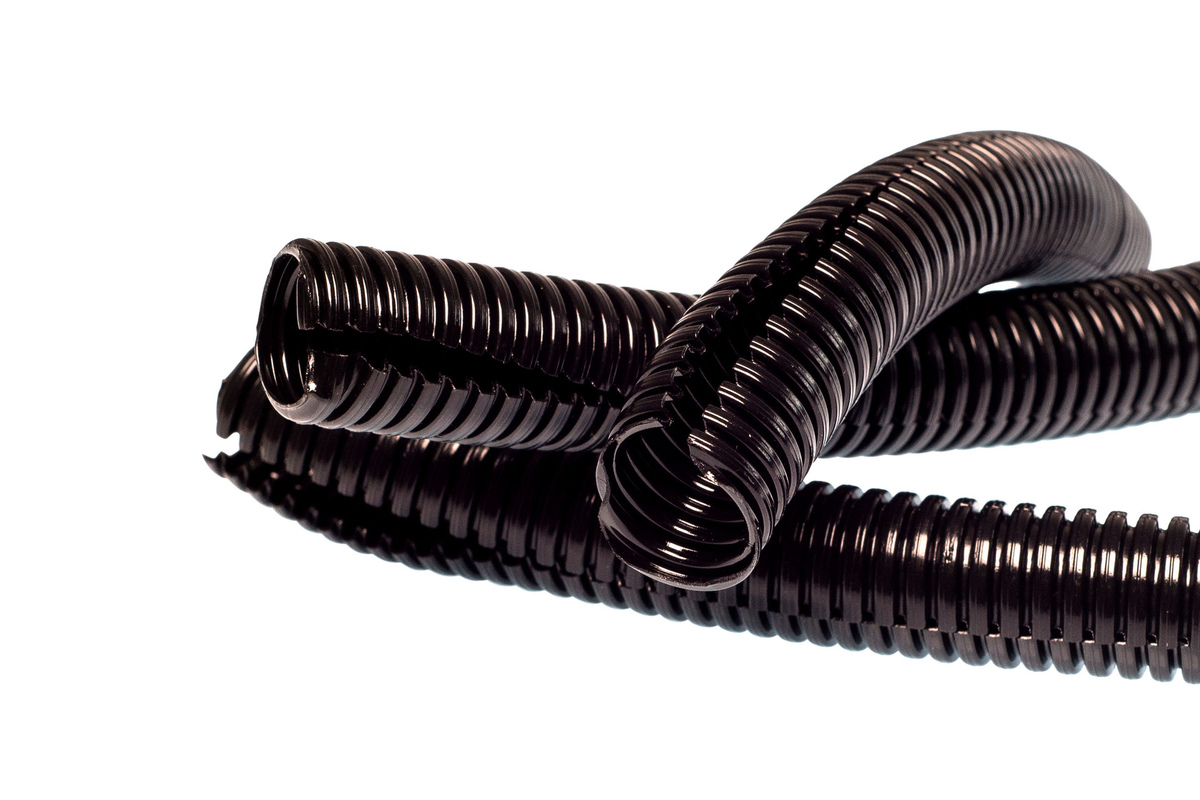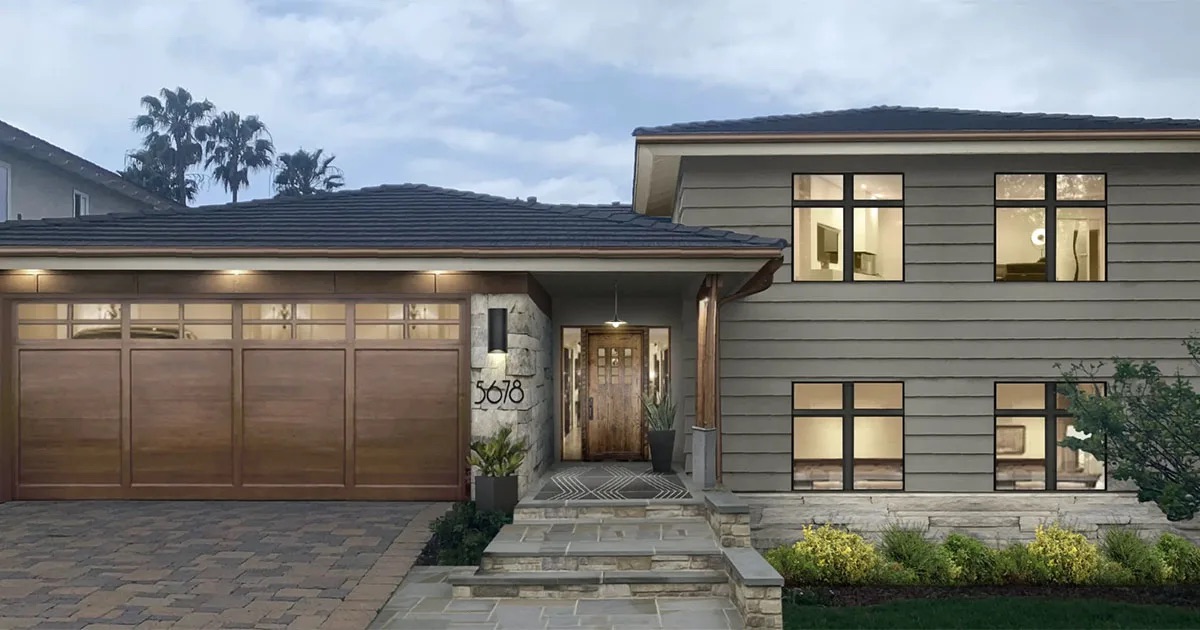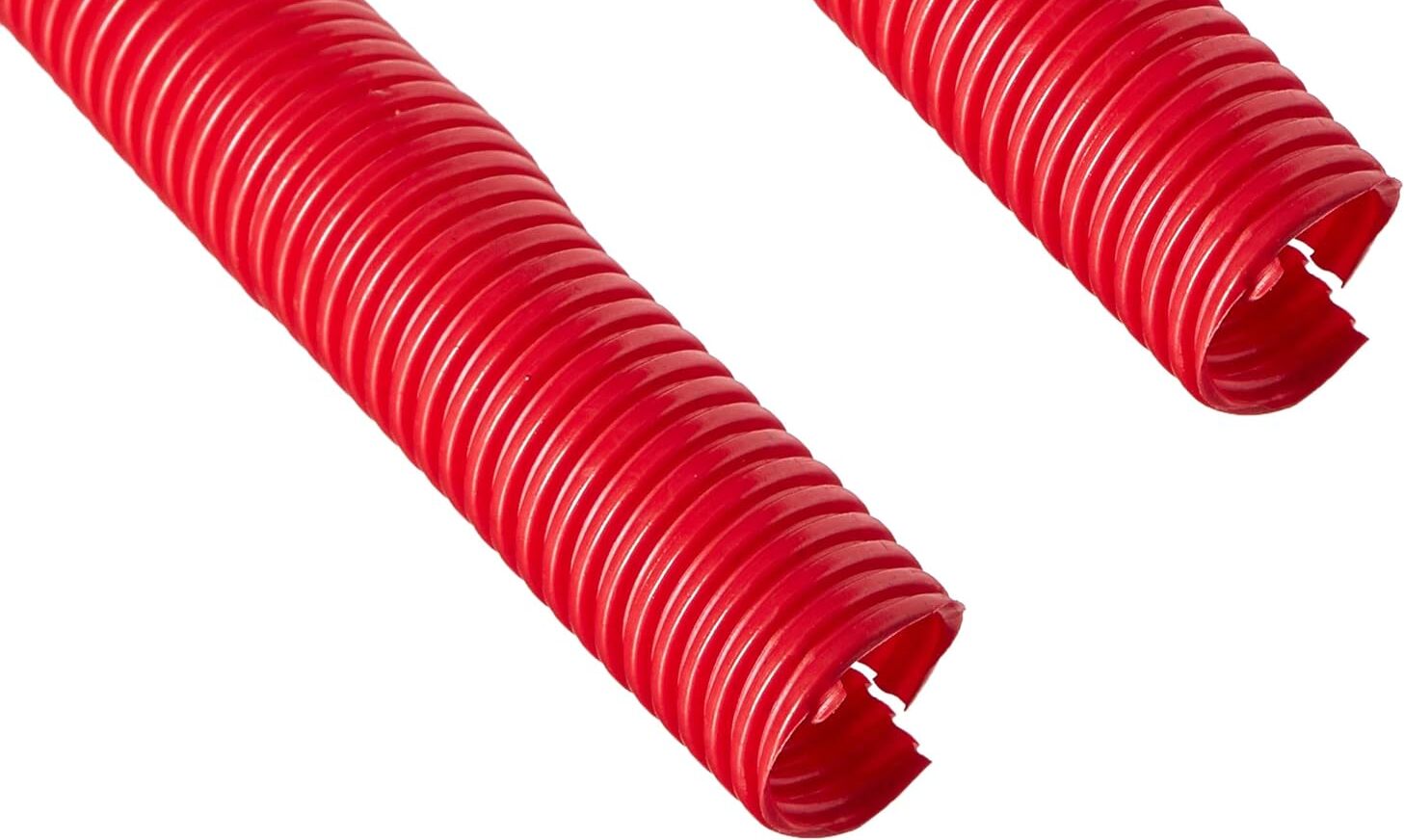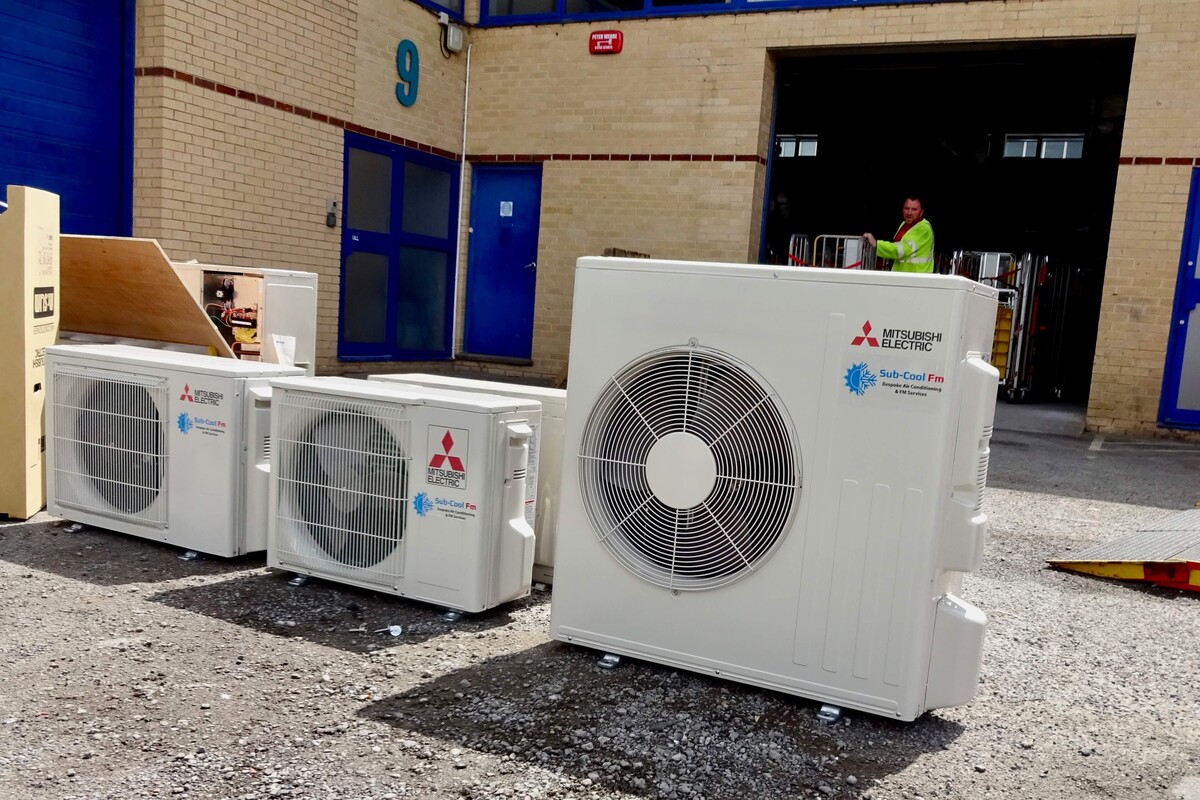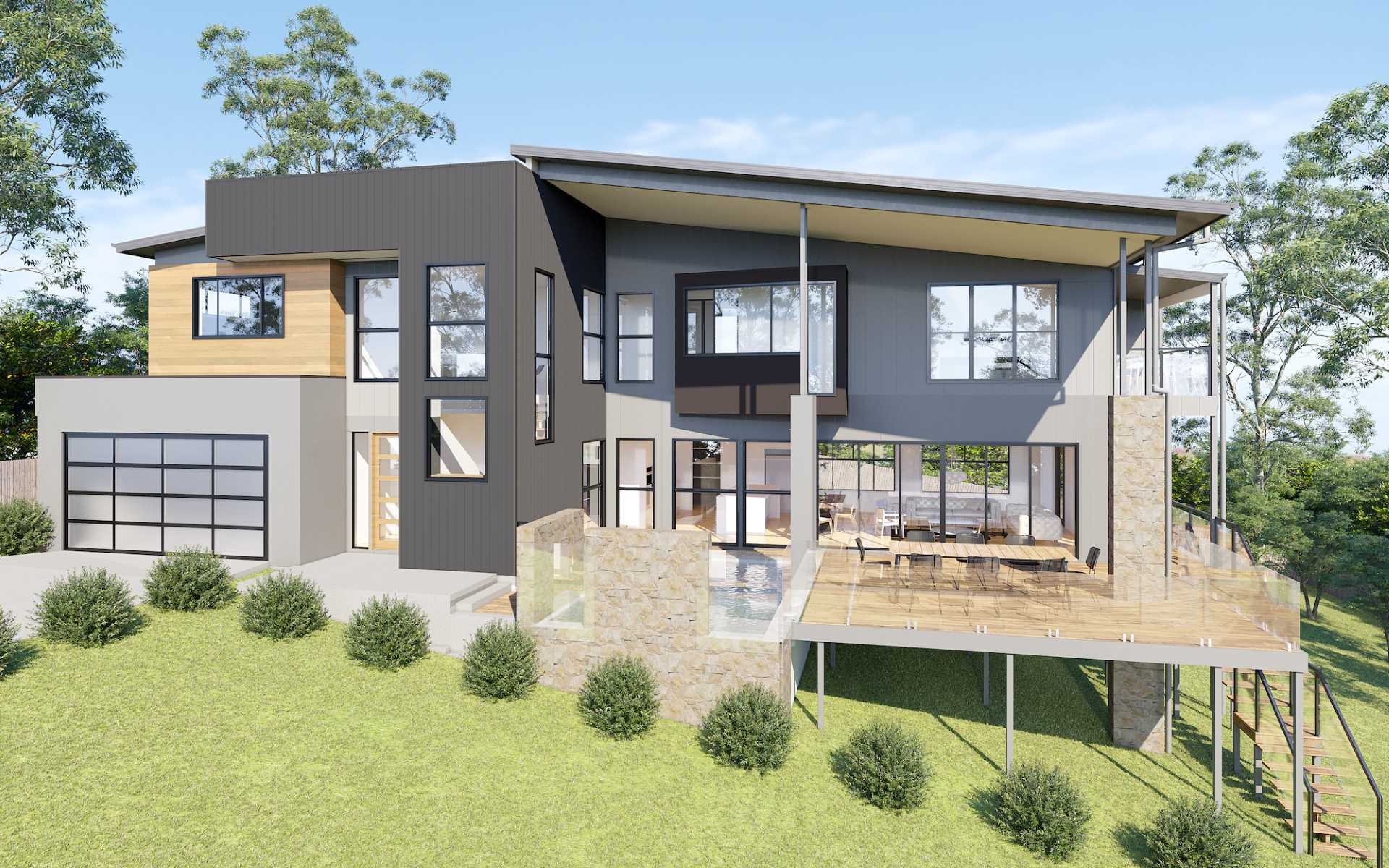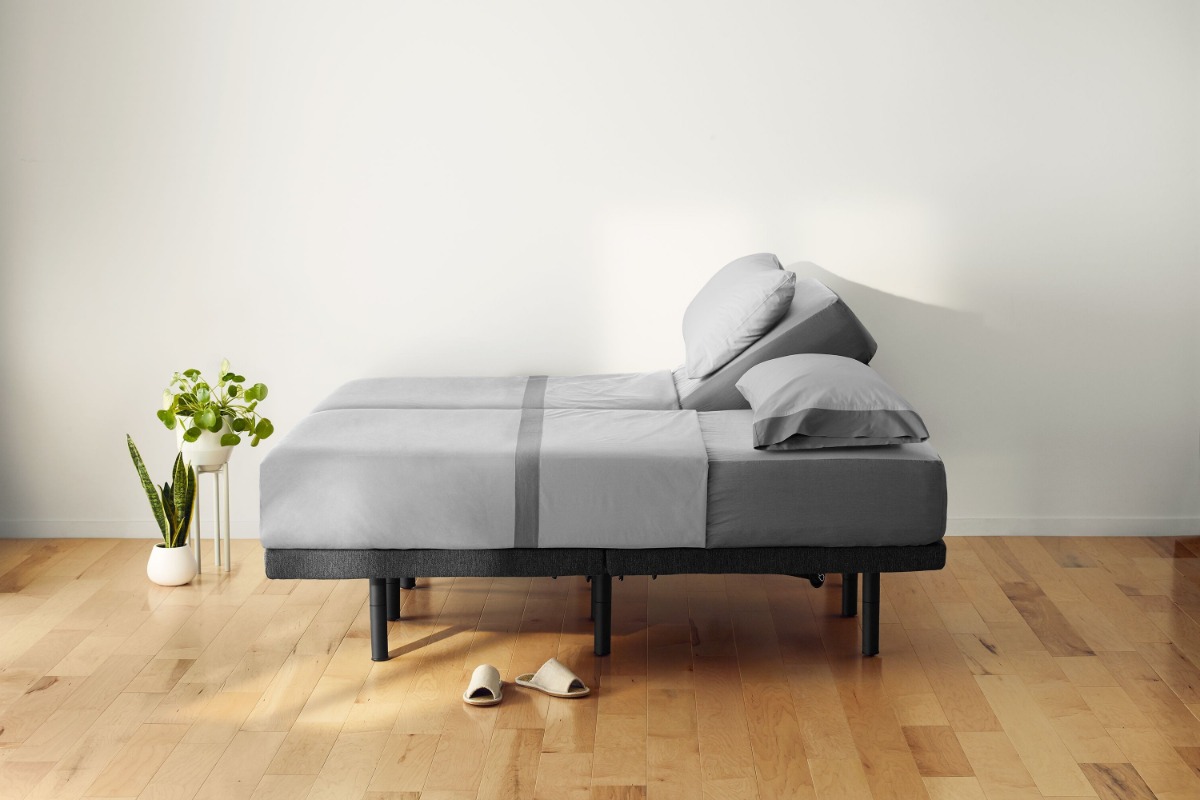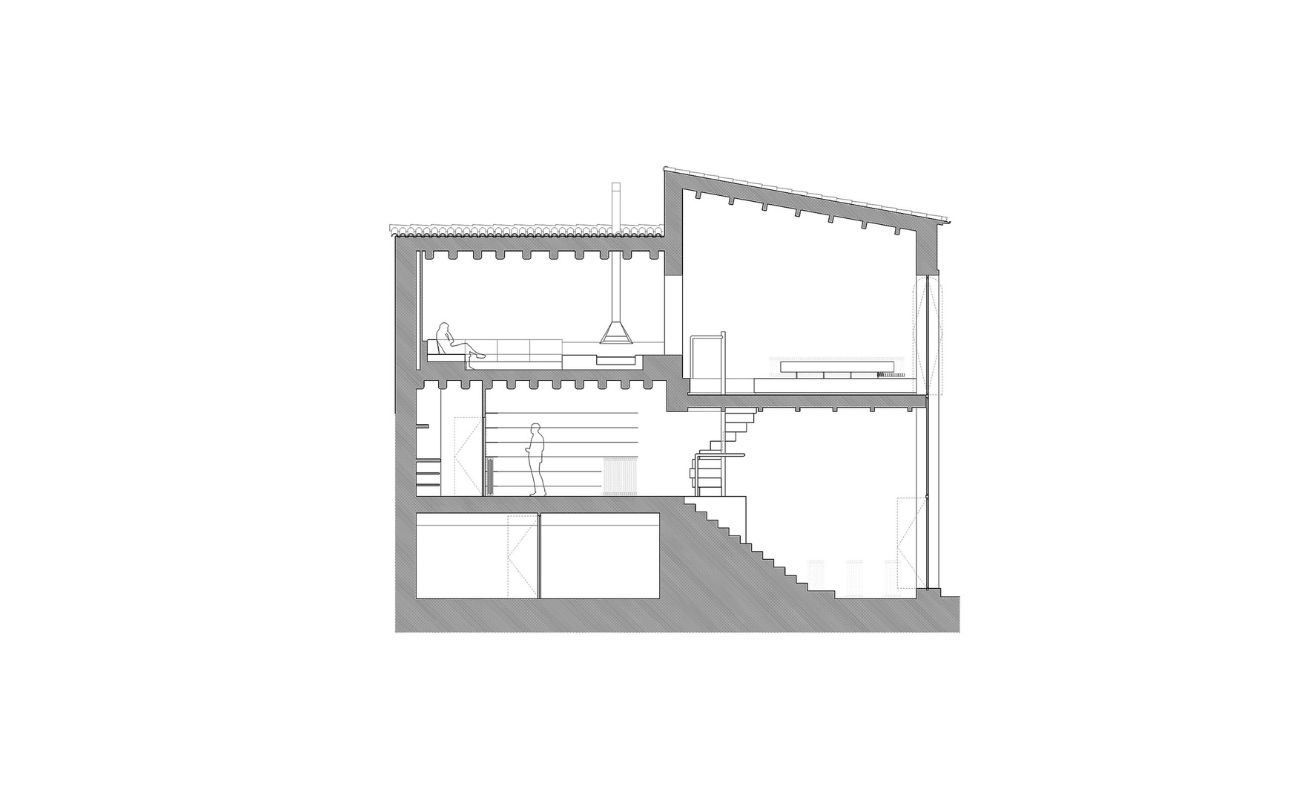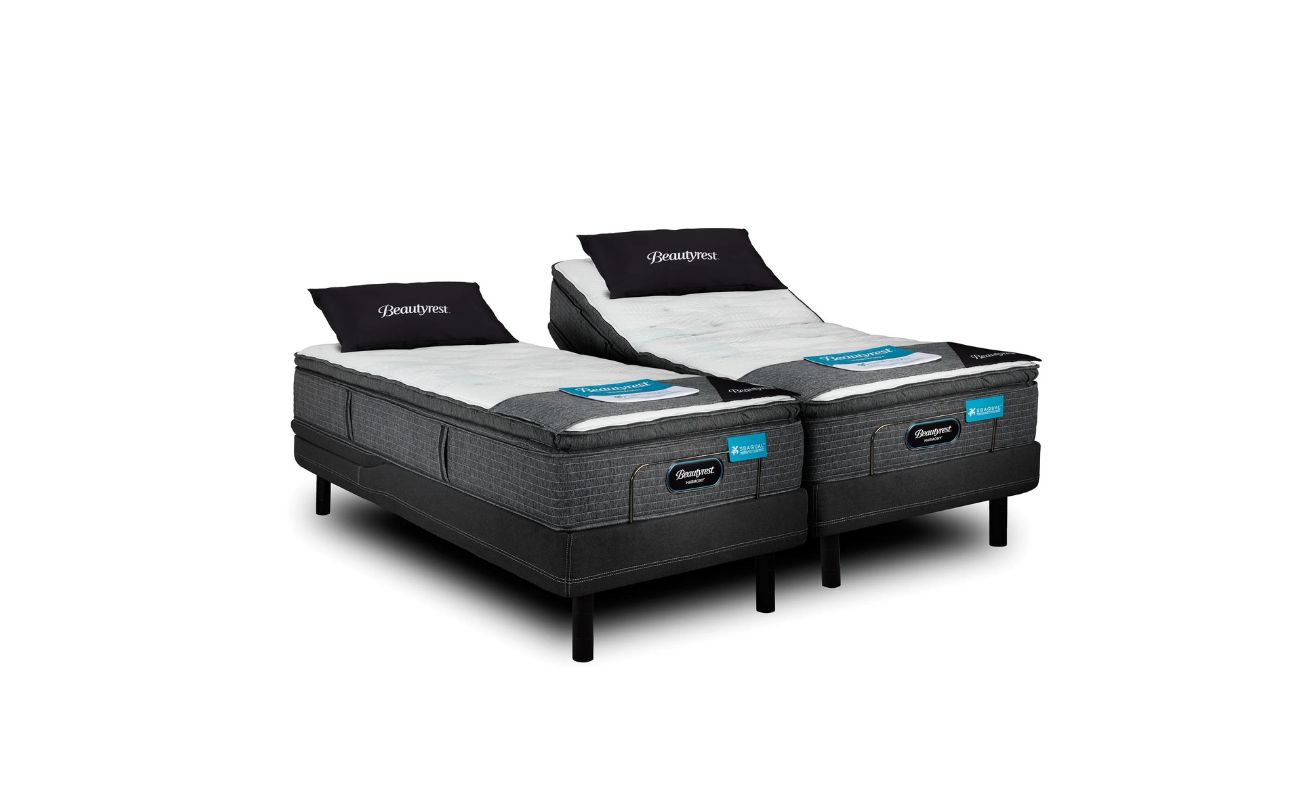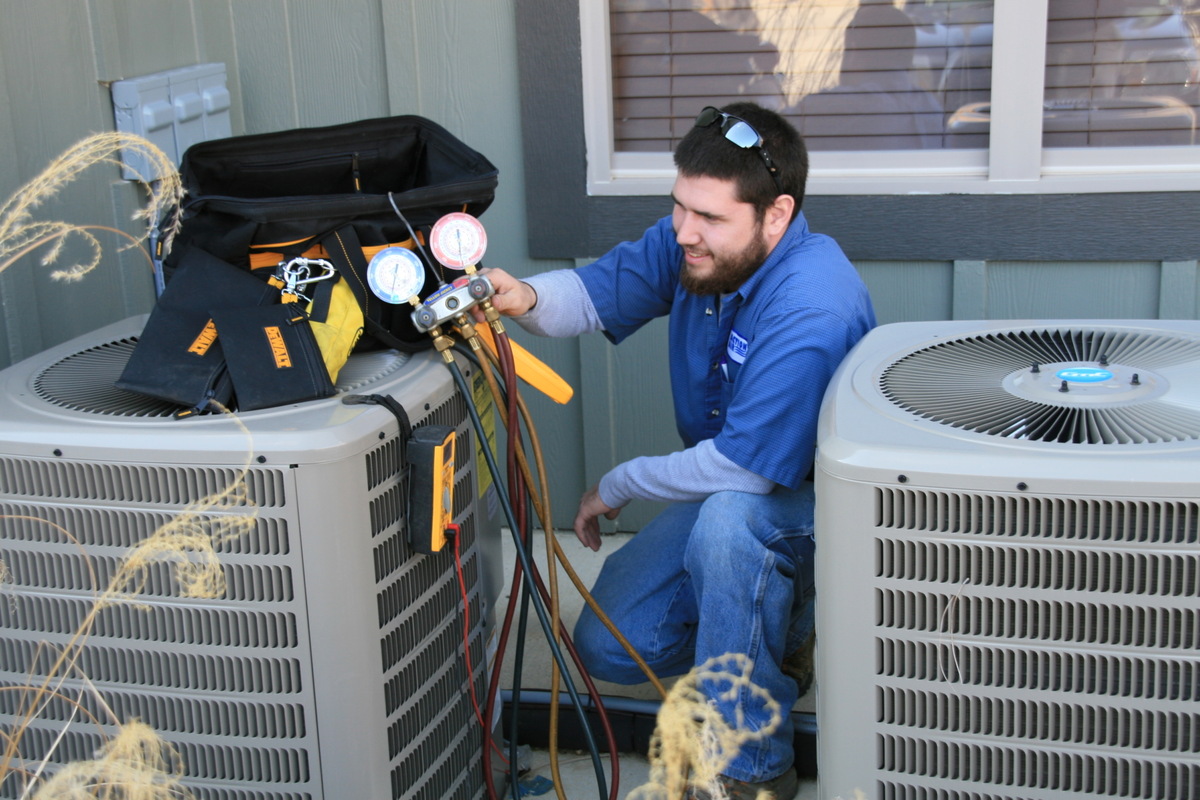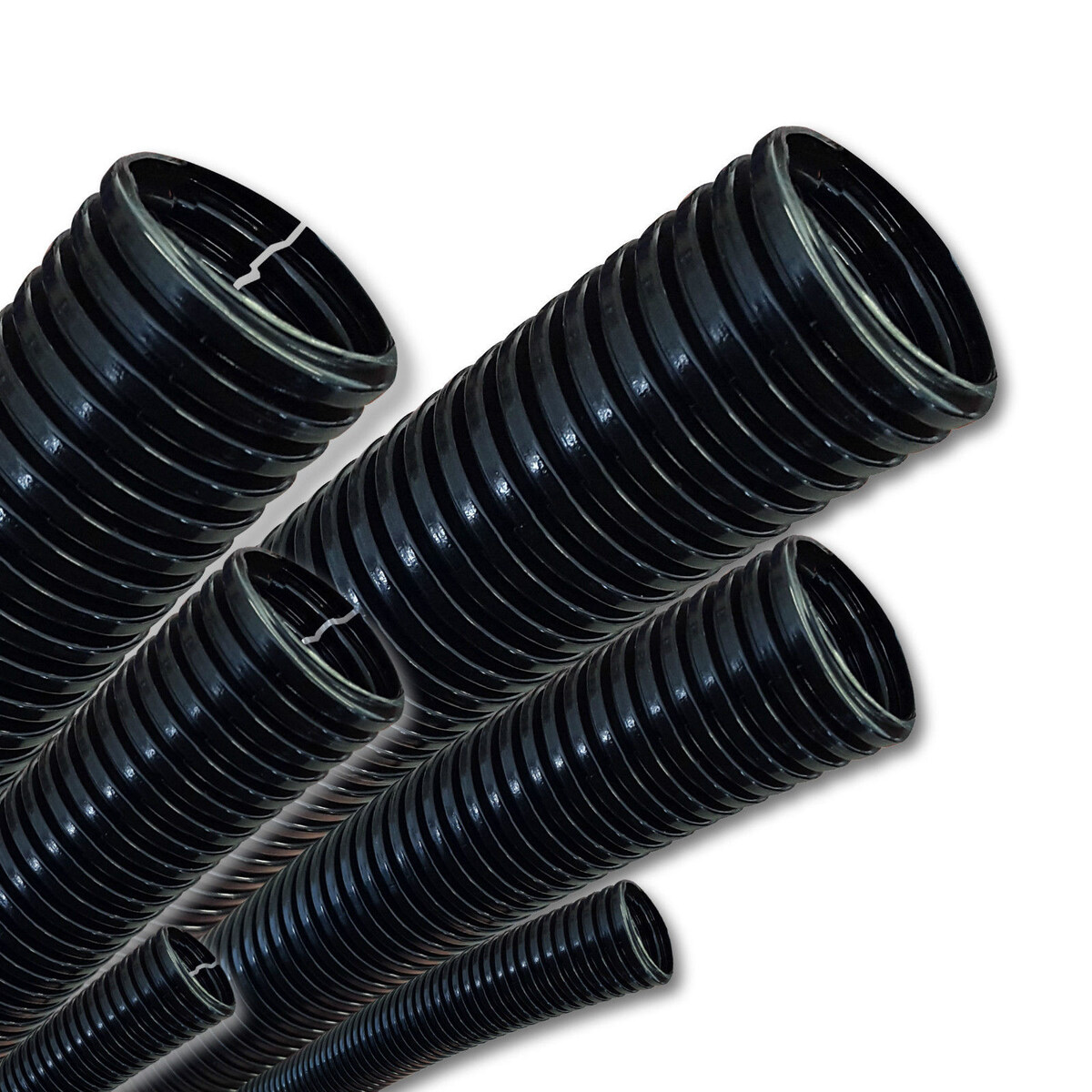Home>Home Maintenance>What Is A Split Air Conditioning System
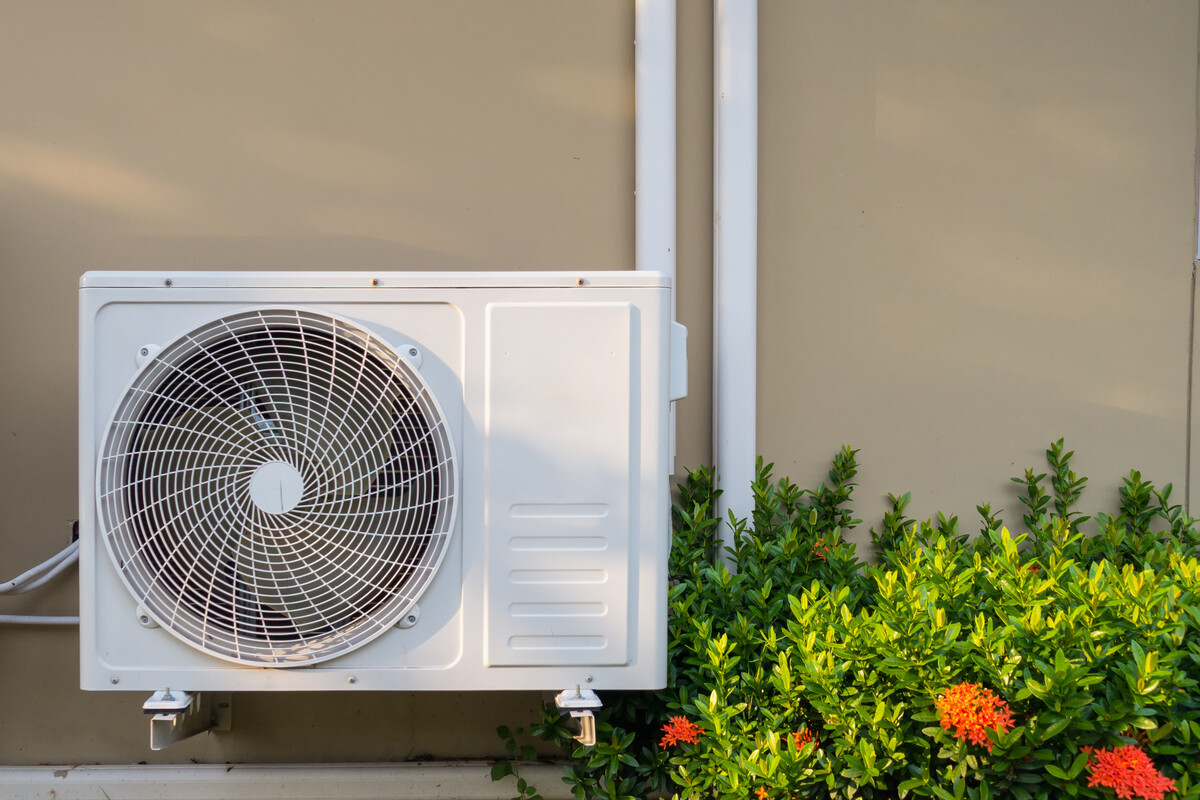

Home Maintenance
What Is A Split Air Conditioning System
Modified: March 6, 2024
Learn about split air conditioning systems and how they can improve your home's comfort. Discover the benefits and maintenance tips for this popular home cooling option.
(Many of the links in this article redirect to a specific reviewed product. Your purchase of these products through affiliate links helps to generate commission for Storables.com, at no extra cost. Learn more)
Introduction
Welcome to our comprehensive guide on split air conditioning systems. If you’re looking for an efficient and effective way to cool your home, a split air conditioning system could be the solution you need. In this article, we will explore everything you need to know about split air conditioning systems, including how they work, their components, installation process, maintenance tips, troubleshooting common issues, and the benefits they offer.
A split air conditioning system, also known as a ductless air conditioning system, is a popular choice for homeowners who want to control the temperature in individual rooms or zones of their homes. Unlike traditional central air conditioning systems that use ductwork to distribute cool air throughout the house, split systems provide targeted cooling without the need for extensive ductwork installation.
Split air conditioning systems consist of two main components: an indoor unit and an outdoor unit. The indoor unit is responsible for delivering cool air into the room, while the outdoor unit houses the compressor and condenser, which work together to cool the air. These units are connected by refrigerant lines and electrical cables, allowing for efficient cooling and temperature control.
One of the significant advantages of split air conditioning systems is their flexibility. With this type of system, you have the freedom to control the temperature in different areas of your home independently. This not only allows for personalized comfort but also helps save energy and reduce utility costs by only cooling the rooms that are in use.
Split air conditioning systems are also known for their ease of installation. Since no ductwork is required, these systems can be installed quickly and with minimal disruption to your home. This makes them an ideal choice for retrofitting older homes or adding cooling capabilities to specific areas, such as home additions or converted garages.
Another key benefit of split air conditioning systems is their improved energy efficiency compared to traditional central air conditioning systems. By utilizing individual units for each room or zone, you can avoid energy losses that occur through ductwork. Additionally, most split systems come equipped with energy-saving features, such as programmable thermostats and inverter technology, which optimize energy usage and help reduce your carbon footprint.
However, like any cooling system, split air conditioning systems have their drawbacks. They tend to be more expensive upfront compared to traditional systems, due to the need for multiple indoor units and the additional installation work required. Additionally, maintaining and troubleshooting these systems may require professional assistance, as they can be more complex than window units or central air conditioners.
In the following sections of this article, we will delve deeper into how split air conditioning systems work, explore the components involved, discuss the installation process, provide maintenance tips, troubleshoot common issues, and highlight the energy efficiency and cost-saving benefits they offer.
So, whether you’re considering upgrading your current cooling system or looking to install a new one, this guide will serve as a valuable resource to help you make informed decisions and ensure optimal performance of your split air conditioning system.
Key Takeaways:
- Split air conditioning systems offer personalized comfort and energy savings by allowing you to cool only the areas that are in use, eliminating energy losses from ductwork, and incorporating energy-efficient features like inverter technology and programmable thermostats.
- Regular maintenance, timely repairs, and professional servicing are crucial for ensuring the longevity and optimal performance of split air conditioning systems, helping to prevent potential problems and maintain energy efficiency.
Read more: What Is Split Ductless Air Conditioning
How Does a Split Air Conditioning System Work?
A split air conditioning system works by utilizing two main components – an indoor unit and an outdoor unit – to cool the air and distribute it throughout your home. Let’s take a closer look at the process and the key components involved:
1. Indoor Unit: The indoor unit of a split air conditioning system is responsible for cooling the air and distributing it into the room. It typically consists of a fan, evaporator coil, air filter, and controls. The fan draws warm indoor air over the evaporator coil, which contains a refrigerant. As the warm air passes over the evaporator coil, the refrigerant absorbs the heat from the air, cooling it down. The cooled air is then blown back into the room through the fan, providing a comfortable indoor environment.
2. Outdoor Unit: The outdoor unit houses the compressor, condenser coil, and a fan. It serves as the “engine” of the split system. The compressor plays a vital role in the cooling process by pressurizing the refrigerant and circulating it between the indoor and outdoor units. The condenser coil, located on the outside of the unit, releases the heat absorbed from the indoor air, allowing the refrigerant to cool down and become ready for the next cycle. The fan blows the outdoor air over the condenser coil to assist in the heat dissipation process.
3. Refrigerant Lines: The indoor and outdoor units are connected by refrigerant lines, which circulate the refrigerant between them. These lines carry refrigerant in a closed-loop system, allowing it to absorb heat from the indoor air and release it outside. The refrigerant changes states from a gas to a liquid and vice versa as it cycles between the evaporator and condenser coils.
4. Electrical Connections: Split air conditioning systems also require electrical connections to power the units and control their operation. The indoor and outdoor units are connected with electrical cables, allowing them to communicate and synchronize their functions. These cables enable the transfer of power and commands, such as temperature adjustments and fan speed control.
When the split air conditioning system is turned on, the indoor unit starts the cooling cycle by drawing warm indoor air over the evaporator coil. The refrigerant in the coil absorbs the heat from the air, causing it to cool down. The cooled air is then distributed back into the room through the fan, providing a comfortable and refreshing environment.
Meanwhile, the absorbed heat is transferred to the outdoor unit through the refrigerant lines. The compressor pressurizes the refrigerant, raising its temperature. The refrigerant then moves to the condenser coil, where the heat is released to the surrounding outdoor air. The refrigerant cools down and returns to the indoor unit to repeat the cooling cycle.
Throughout this process, the split air conditioning system continuously regulates the temperature and airflow based on the settings you choose. Advanced systems may come with features like programmable thermostats, allowing you to set specific temperatures for different times of the day or control the system remotely through a smartphone app.
Regardless of the specific model or brand you choose, the basic operation of a split air conditioning system remains consistent. It efficiently cools the indoor air by removing heat and continuously circulates the cooled air, creating a comfortable and pleasant environment in your home.
Components of a Split Air Conditioning System
A split air conditioning system consists of several key components that work together to provide efficient cooling and temperature control. Understanding these components can help you make informed decisions about your system and enable you to troubleshoot issues effectively. Here are the main components of a split air conditioning system:
1. Indoor Unit:
- Evaporator Coil: The evaporator coil is the component responsible for cooling the air. It contains refrigerant and is located inside the indoor unit. As warm air passes over the coil, the refrigerant absorbs the heat, reducing the temperature of the air.
- Fan: The fan in the indoor unit blows air over the evaporator coil, allowing the cooled air to circulate back into the room. The fan also helps to improve air circulation, ensuring an even distribution of cool air.
- Air Filter: The air filter traps dust, pollen, and other airborne particles, preventing them from entering the indoor unit. Regular cleaning or replacement of the air filter is essential to maintain good indoor air quality and prevent blockages that can hinder the system’s efficiency.
- Controls: The controls in the indoor unit include the thermostat and settings for temperature, fan speed, and mode selection. These controls allow you to adjust the cooling output and customize the comfort level in your home.
2. Outdoor Unit:
- Compressor: The compressor is the heart of the split air conditioning system. It pressurizes the refrigerant to increase its temperature and prepare it for the cooling cycle. The compressor is typically located in the outdoor unit and ensures efficient and reliable operation of the system.
- Condenser Coil: The condenser coil, also known as the outdoor coil, is responsible for releasing heat absorbed from the indoor air. It is located in the outdoor unit and works in conjunction with the compressor. The condenser coil helps to dissipate heat, allowing the refrigerant to cool down and prepare for the next cycle.
- Fan: The fan in the outdoor unit blows air over the condenser coil, aiding in the heat dissipation process. It helps to remove the heat absorbed from the indoor air and promotes efficient cooling of the refrigerant.
3. Refrigerant Lines:
- Refrigerant Pipes: These are the pipes that connect the indoor and outdoor units, allowing the refrigerant to flow between them. The refrigerant pipes are responsible for carrying the cooled or heated refrigerant, depending on the mode of operation, and facilitate the transfer of heat between the indoor and outdoor units.
4. Electrical Connections:
- Electrical Cables: The electrical cables connect the indoor and outdoor units, enabling power supply and communication between the components. These cables carry the electrical current necessary for the operation of the system and facilitate the transmission of signals for temperature control and system settings.
Each component plays a vital role in the operation of a split air conditioning system. Additionally, auxiliary components such as drain lines, insulation, and refrigerant line insulation contribute to the overall performance and efficiency of the system. Regular maintenance and timely professional inspections can help ensure that all components are functioning optimally, leading to a well-performing and long-lasting split air conditioning system.
Benefits of a Split Air Conditioning System
A split air conditioning system offers numerous advantages for homeowners seeking efficient and effective cooling solutions. Whether you’re looking to upgrade your existing system or install a new one, here are some key benefits of opting for a split air conditioning system:
1. Individual Temperature Control: One of the major advantages of a split system is the ability to control the temperature in individual rooms or zones. Each indoor unit can be independently adjusted to meet specific comfort preferences, allowing different areas of your home to be cooled to different temperatures. This level of customization ensures optimal comfort for everyone in your household.
2. Energy Efficiency: Split air conditioning systems are highly energy-efficient compared to traditional central air conditioning systems. With central systems, cool air is distributed through ductwork, which can lead to energy losses. In contrast, split systems deliver conditioned air directly to each room, eliminating these losses. Additionally, most split systems come with energy-saving features such as programmable thermostats and inverter technology, which optimize energy usage and reduce utility costs.
3. Savings on Utility Bills: The energy-efficiency of split air conditioning systems translates into cost savings on your utility bills. By allowing you to cool only the rooms that are in use, you avoid wasting energy on unoccupied spaces. Furthermore, the ability to set individual temperature zones means you can avoid overcooling certain areas of your home, resulting in further energy and cost savings.
4. Easy Installation: Split systems are relatively easy to install, especially compared to central air conditioning systems that require extensive ductwork. The absence of ducts reduces installation time and cost, making split systems a convenient option for both new construction and retrofitting existing homes. Additionally, the flexibility of the system allows for greater placement options, enabling you to install indoor units in areas where they are most effective.
5. Improved Indoor Air Quality: Split air conditioning systems feature built-in air filters that effectively remove dust, pollen, allergens, and other airborne particles. These filters help improve indoor air quality by trapping pollutants and preventing them from circulating throughout your home. Cleaner air promotes a healthier living environment, particularly for individuals with allergies or respiratory conditions.
6. Quiet Operation: Split air conditioning systems are known for their quiet operation. The indoor unit consists of a quiet fan that delivers cooling without creating excessive noise. The noisy components, such as the compressor and condenser, are located in the outdoor unit, ensuring minimal disruption to your daily activities and a peaceful indoor environment.
7. Flexibility and Zoning: Split systems offer flexibility in terms of placement and zoning. You can add indoor units to specific rooms or areas, providing targeted cooling where it’s needed most. This flexibility is especially beneficial in larger homes or buildings with varying comfort needs. It also allows for future expansion, as you can easily add new indoor units if needed.
8. Aesthetically Pleasing: With sleek and modern designs, the indoor units of split air conditioning systems blend well with any decor style. They are relatively compact and can be mounted on walls or suspended from ceilings, offering a discreet and attractive cooling solution without compromising the aesthetics of your living space.
Overall, a split air conditioning system provides efficient cooling, energy savings, and personalized comfort. With the ability to control temperatures in individual rooms, you can enjoy optimal comfort while reducing energy consumption and utility costs. The ease of installation, improved indoor air quality, quiet operation, and flexibility make split air conditioning systems an excellent choice for homeowners seeking comfort, efficiency, and convenience.
Drawbacks of a Split Air Conditioning System
While split air conditioning systems offer many benefits, it’s essential to consider their potential drawbacks before making a decision. Here are a few factors to keep in mind:
1. Upfront Cost: Split air conditioning systems tend to be more expensive upfront compared to traditional central air conditioning systems or window units. The cost is influenced by factors such as the number of indoor units needed, installation requirements, and the complexity of the system. However, it’s important to note that the long-term energy savings and efficiency of split systems can offset the initial investment.
2. Installation Complexity: Installing a split system may require professional assistance due to its complexity. It involves connecting the indoor and outdoor units, running refrigerant lines, and electrical wiring between them. The installation process can be more labor-intensive compared to other cooling systems, especially if there is no existing infrastructure in place. Hiring a qualified technician ensures proper installation and optimal performance of the system.
3. Maintenance and Repairs: Split air conditioning systems require regular maintenance to ensure optimal performance. This includes cleaning or replacing filters, inspecting refrigerant lines for leaks, and checking the overall system for any issues. While maintenance tasks can often be done by homeowners, certain aspects may require professional servicing. Additionally, if repairs are needed, the complexity of the system might require specialized technicians, potentially leading to higher costs.
4. Limited Cooling Capacity: Split air conditioning systems are designed to cool specific areas or rooms rather than the entire house. While this provides flexibility and energy efficiency, it means that the system may not be suitable for large open spaces or multi-story buildings. In such cases, it may be necessary to install multiple indoor units or consider alternative cooling options.
5. Noise from Outdoor Unit: While the indoor unit of a split system is typically quiet, the outdoor unit may generate some noise during operation. The compressor and condenser fan in the outdoor unit can produce sound, which might affect outdoor living spaces or adjacent properties. However, advancements in technology have led to quieter outdoor units, and proper installation and soundproofing measures can further minimize noise disturbances.
6. Dependency on Electricity: Split air conditioning systems rely on electricity to power their operation. In the event of a power outage or electrical failure, the system will not function. However, some models offer backup power options or can be integrated with a generator to provide temporary cooling during power outages.
7. Professional Assistance: Unlike window units or portable air conditioners, which can be installed and maintained by homeowners, split systems often require professional assistance. This can include installation, maintenance, and repairs, which may result in additional costs. However, engaging professionals ensures the proper functioning and longevity of the system.
While these drawbacks should be considered, it’s important to note that many of them can be mitigated with proper planning, professional installation, and regular maintenance. With the right system sizing, installation expertise, and ongoing care, the disadvantages of a split air conditioning system can be minimized, allowing you to enjoy the energy efficiency, personalized comfort, and longevity that these systems offer.
Regular maintenance of your split air conditioning system, such as cleaning or replacing filters, can improve its efficiency and extend its lifespan.
Read more: What Is A HVAC Split System
Installation Process for a Split Air Conditioning System
Installing a split air conditioning system involves several steps that are best performed by a professional technician. Here is an overview of the typical installation process:
1. Evaluation and Planning: The first step is to evaluate your cooling needs and determine the appropriate system size for your space. The technician will assess factors such as the size of the area to be cooled, insulation, and any specific requirements or limitations. Based on the evaluation, they will recommend the number of indoor units needed and the capacity of the outdoor unit.
2. Indoor Unit Placement: The technician will determine the optimal location for the indoor unit(s) in each room or zone. Factors such as airflow, accessibility, and aesthetics will be taken into consideration. The indoor unit can be mounted on a wall or suspended from a ceiling, based on the specific requirements and preferences of the homeowner.
3. Outdoor Unit Placement: The outdoor unit, which houses the compressor and condenser, needs to be installed in a suitable location. It should be placed on a stable surface that can support the weight of the unit. The technician will ensure proper clearance around the unit to facilitate airflow and prevent obstructions.
4. Refrigerant and Electrical Connections: The technician will run refrigerant lines and electrical wiring between the indoor and outdoor units. These connections are vital for the proper functioning of the system. The refrigerant lines carry the refrigerant between the two units, while the electrical wiring powers the system and allows for communication between the components.
5. Mounting and Securing: The indoor unit(s) will be mounted securely in the designated locations. The technician will ensure the unit is level and properly anchored to prevent any movement or vibration during operation. They will also connect the refrigerant lines and electrical wiring to the indoor unit.
6. Connecting Drainage: Proper drainage is essential to remove condensate from the indoor unit. The technician will install a condensate drain line to ensure the excess moisture is effectively removed. This prevents water damage and maintains the efficiency of the system.
7. Outdoor Unit Installation: The outdoor unit will be positioned in its designated location and secured. The technician will connect the refrigerant lines, electrical wiring, and condensate drain line to the outdoor unit. They will also ensure the unit is level and properly grounded.
8. System Testing and Startup: Once the installation is complete, the technician will thoroughly test the system to ensure proper operation. They will check for refrigerant leaks, verify electrical connections, and confirm that all components are functioning as intended. They will also program the thermostat and provide instructions on operating the system.
9. System Calibration and Adjustments: The technician will calibrate the system to ensure optimal performance and efficiency. They will make any necessary adjustments to airflow, refrigerant levels, and system settings to achieve the desired cooling output and temperature control.
10. User Training and Documentation: The technician will provide user training, explaining how to operate the system, use the controls, and perform basic maintenance tasks. They will also provide any necessary documentation, such as manuals and warranty information, to the homeowner.
It’s important to note that the installation process may vary depending on the specific system and the complexity of the installation. Hiring a professional technician ensures that the installation is done correctly, minimizing the risk of problems and maximizing the performance and longevity of your split air conditioning system.
Maintenance and Care for a Split Air Conditioning System
Regular maintenance and care are essential for maintaining the performance, efficiency, and longevity of your split air conditioning system. By following these maintenance tips, you can ensure optimal operation and prevent potential problems:
1. Clean or Replace Air Filters: Dirty or clogged air filters restrict airflow and reduce the system’s efficiency. It’s crucial to clean or replace the air filters regularly, typically every 1-3 months, depending on usage and the environment. This helps maintain good indoor air quality and allows the system to deliver clean and fresh air into your living space.
2. Inspect and Clean Indoor and Outdoor Units: Regularly inspect the indoor and outdoor units for any build-up of dirt, debris, or obstructions. Clean the units using a soft cloth or brush to remove any accumulated dust, leaves, or other debris. This ensures proper airflow and prevents blockages that can hinder the system’s efficiency.
3. Check and Clear Condensate Drains: Over time, condensate drains can become clogged with dirt or algae, leading to water leakage or system malfunctions. Inspect the condensate drain lines and clear any blockages using a mixture of bleach and water or a dedicated condensate drain cleaning solution. This will help prevent water damage and maintain proper drainage.
4. Check Refrigerant Levels: Proper refrigerant levels are crucial for the system’s cooling capacity and efficiency. Low refrigerant levels can indicate a leak in the system. It’s recommended to have a professional technician check and refill refrigerant levels if necessary. As refrigerant handling requires specialized knowledge and equipment, it’s best to leave this task to trained HVAC professionals.
5. Maintain Outdoor Unit Clearance: Ensure that the area around the outdoor unit remains clear of any obstructions. Trim any vegetation, clear debris, and maintain a minimum clearance of at least two feet around the unit. This allows for proper airflow, reduces the risk of damage, and ensures optimal cooling performance.
6. Schedule Professional Inspections: Regular professional inspections are essential for identifying any potential issues, ensuring safe and efficient operation of the system. Professionals can perform comprehensive checks, including examining electrical connections, cleaning coils, verifying refrigerant levels, and conducting overall system diagnostics.
7. Program Thermostat Settings: Utilize the programmable features of your thermostat to optimize comfort and energy efficiency. Set higher temperatures when you’re away from home or during periods of less occupancy. This reduces the workload on the system and saves energy. Programming temperature setbacks and schedules can also help reduce utility costs.
8. Practice Good Maintenance Habits: Beyond the regular tasks mentioned above, there are additional practices that contribute to overall system maintenance and care. These include keeping windows and doors closed when the system is operating, ensuring that the system’s vents and registers are not blocked, and avoiding excessive strain on the system by minimizing heat-producing activities (such as cooking) during peak cooling times.
By incorporating these maintenance practices into your routine, you can keep your split air conditioning system running smoothly and efficiently throughout its lifespan. Regular maintenance not only improves the system’s performance but also helps prevent unexpected breakdowns and prolongs the longevity of the unit.
Troubleshooting Common Issues with a Split Air Conditioning System
While split air conditioning systems are generally reliable, occasional issues may arise that require troubleshooting. By understanding common problems and their potential solutions, you can address these issues and restore your system’s functionality. Here are some troubleshooting tips for common problems with a split air conditioning system:
1. No Cool Air:
- Check the thermostat settings to ensure they are correctly set for cooling mode.
- Ensure that the air filters are clean and not obstructed. Clean or replace them if necessary.
- Verify that the power supply to the indoor and outdoor units is not interrupted. Check circuit breakers and reset them if needed.
- Inspect the outdoor unit and ensure it is not blocked by debris. Clear any obstructions that may be inhibiting airflow.
- If none of these troubleshooting steps solve the issue, it may be a more complex problem that requires professional assistance. Contact a qualified technician for further diagnosis and repair.
2. Insufficient Cooling:
- Ensure that the temperature settings are appropriately adjusted on the thermostat.
- Inspect the air filters and clean or replace them if they are dirty. Dirty filters can restrict airflow, reducing cooling capacity.
- Check for any obstructions around the indoor and outdoor units that could be limiting airflow.
- If the system is still not cooling adequately, it could indicate low refrigerant levels or a malfunctioning component. Contact a professional technician to assess and address the issue.
3. Strange Odors:
- Inspect and clean or replace the air filters to remove any accumulated dirt or debris that may be causing odors.
- Check for any signs of mold or mildew in the indoor unit. Clean the unit thoroughly and consider using an antimicrobial spray to inhibit microbial growth.
- If the odor persists, it could be due to a more serious issue, such as a refrigerant leak or a problem with the drain lines. In such cases, it’s recommended to seek professional assistance to identify and resolve the issue.
4. Strange Noises:
- Inspect the outdoor unit and remove any debris or objects that may be causing the noise.
- Check the indoor unit to ensure it is securely mounted and that no loose parts are causing the noise.
- If the noise persists, it could indicate a problem with the fan motor, compressor, or other internal components. In such cases, it’s best to contact a professional technician to diagnose the issue and perform any necessary repairs.
5. Water Leakage:
- Check the condensate drain line for any blockages. Clear the blockage using a mixture of bleach and water or a dedicated condensate drain cleaning solution.
- Verify that the condensate drain pan is not damaged and is properly installed.
- If water leakage continues, it could indicate a more significant issue, such as a refrigerant leak or a malfunctioning component. It’s important to consult a professional technician to diagnose and resolve the problem.
6. System Not Responding to Controls:
- Check the batteries in the thermostat and replace them if needed.
- Ensure that the thermostat is properly set to the desired temperature and cooling mode.
- Verify that the indoor and outdoor units are receiving proper power supply and that electrical connections are secure.
- If the system still does not respond to controls, it may be a sign of a malfunctioning thermostat or a control board issue. Seek professional assistance to diagnose and rectify the problem.
It’s important to note that these troubleshooting tips are general guidelines, and specific issues may require different solutions or professional intervention. Regular maintenance, timely repairs, and professional servicing will help prevent and address common problems, ensuring that your split air conditioning system continues to provide efficient and reliable cooling for years to come.
Energy Efficiency and Cost Savings with a Split Air Conditioning System
Split air conditioning systems offer significant energy efficiency benefits compared to traditional cooling systems, resulting in potential cost savings on your utility bills. These systems are designed to provide targeted cooling and personalized comfort, while minimizing energy wastage. Here are the key factors contributing to their energy efficiency and cost-saving advantages:
1. Zoning and Individual Temperature Control: One of the primary advantages of a split air conditioning system is the ability to control the temperature in individual rooms or zones. By cooling only the areas that are in use and adjusting temperatures according to specific preferences, you can avoid wasting energy on unoccupied spaces. Zoning allows for customized comfort, preventing overcooling or overheating and reducing unnecessary energy consumption.
2. Elimination of Duct Losses: Unlike central air conditioning systems that rely on ductwork to distribute cooled air, split systems do not suffer from the energy losses associated with duct losses. Ductwork can leak conditioned air, allowing it to escape into unconditioned spaces such as attics or crawl spaces. By eliminating ductwork, split systems maintain higher efficiency levels, delivering cooled air directly to the desired areas.
3. Inverter Technology: Many split air conditioning systems incorporate inverter technology. This technology allows the compressor to operate at variable speeds, adjusting its output based on cooling demand. Unlike traditional systems that frequently start and stop the compressor, an inverter system adjusts its power consumption continuously. This results in more precise temperature control, reduced energy consumption, and lower operating costs.
4. Programmable Thermostats: Split systems often come equipped with programmable thermostats, allowing you to set temperature schedules and setbacks based on your lifestyle. You can program the system to operate at higher temperatures when you are away from home or during sleeping hours. This intelligent use of the cooling system optimizes energy usage, reducing costs and minimizing unnecessary cooling when it’s not needed.
5. Energy-Saving Features: Split air conditioning systems incorporate various energy-saving features designed to improve efficiency and reduce overall energy consumption. These features may include sleep modes, eco-friendly settings, and fan speed controls. By utilizing these features, you can further enhance energy efficiency and save on cooling costs without sacrificing comfort.
6. High SEER Ratings: SEER (Seasonal Energy Efficiency Ratio) ratings indicate the efficiency of air conditioning systems. Split systems often have high SEER ratings, typically ranging from 16 to 26, which exceed the minimum levels required by energy efficiency regulations. Higher SEER ratings translate to lower energy consumption, reduced environmental impact, and potential savings on utility bills.
7. Environmentally Friendly Refrigerants: Most modern split air conditioning systems use environmentally friendly refrigerants such as R-410A. These refrigerants have a lower impact on ozone depletion and global warming compared to older refrigerants like R-22. By using eco-friendly refrigerants, split systems contribute to a greener environment and comply with environmental regulations.
8. Size and Placement Flexibility: The ability to install multiple indoor units in different areas of your home allows for more precise cooling and reduces the need to cool the entire home at once. This flexibility enables energy-efficient operation by focusing cooling efforts only where necessary. It also makes split systems a viable option for smaller homes, individual rooms, or additions, eliminating the need for oversized equipment that can waste energy.
When considering the cost savings of a split air conditioning system, it’s important to evaluate both the upfront investment and the long-term operating costs. Although initial installation costs may be higher compared to some other cooling options, the energy efficiency and personalized comfort of split systems can result in significant savings over time.
By optimizing energy consumption, reducing waste, and taking advantage of the advanced features offered by split air conditioning systems, you can enjoy a cool and comfortable home while keeping your energy bills under control. Remember to choose a reputable brand, consult with a professional technician for proper sizing and installation, and conduct regular maintenance to ensure optimal performance and continued efficiency.
Read more: What Is A Mini Split HVAC System
Conclusion
In conclusion, a split air conditioning system is a versatile and efficient cooling solution for homeowners. By understanding how these systems work, recognizing their components, and considering their benefits and drawbacks, you can make an informed decision when it comes to installing or upgrading your cooling system.
Split air conditioning systems offer several advantages that set them apart from other cooling options. The ability to control temperature in individual rooms or zones allows for personalized comfort and energy savings, as you can cool only the areas that are in use. The elimination of ductwork reduces energy losses and ensures efficient cooling performance. Additionally, features like inverter technology, programmable thermostats, and high SEER ratings contribute to energy efficiency and potential cost savings.
However, it’s important to be aware of the initial investment required for a split system and the potential need for professional installation and maintenance. Regular care and maintenance, such as cleaning air filters, inspecting units, and clearing drain lines, are necessary to ensure optimal performance and longevity.
By troubleshooting common issues and understanding how to maximize energy efficiency, you can enjoy the benefits of a split air conditioning system while reducing your environmental impact. Efficient cooling not only provides comfort in hot weather but also helps to lower utility bills and conserve energy resources.
When considering a split air conditioning system, consult with an experienced professional who can assess your specific needs and guide you through the installation process. They can determine the appropriate size and placement of indoor and outdoor units, ensuring effective cooling and energy-efficient operation.
Incorporate the maintenance and care tips mentioned in this guide to keep your system running smoothly and prevent potential problems. Regular professional inspections and timely repairs are imperative for the longevity and optimal performance of your split air conditioning system.
Overall, a well-maintained and properly installed split air conditioning system offers personalized comfort, energy efficiency, and cost savings. By making informed decisions, taking advantage of the system’s features, and implementing good maintenance practices, you can enjoy a cool and comfortable living environment for years to come.
Frequently Asked Questions about What Is A Split Air Conditioning System
Was this page helpful?
At Storables.com, we guarantee accurate and reliable information. Our content, validated by Expert Board Contributors, is crafted following stringent Editorial Policies. We're committed to providing you with well-researched, expert-backed insights for all your informational needs.
